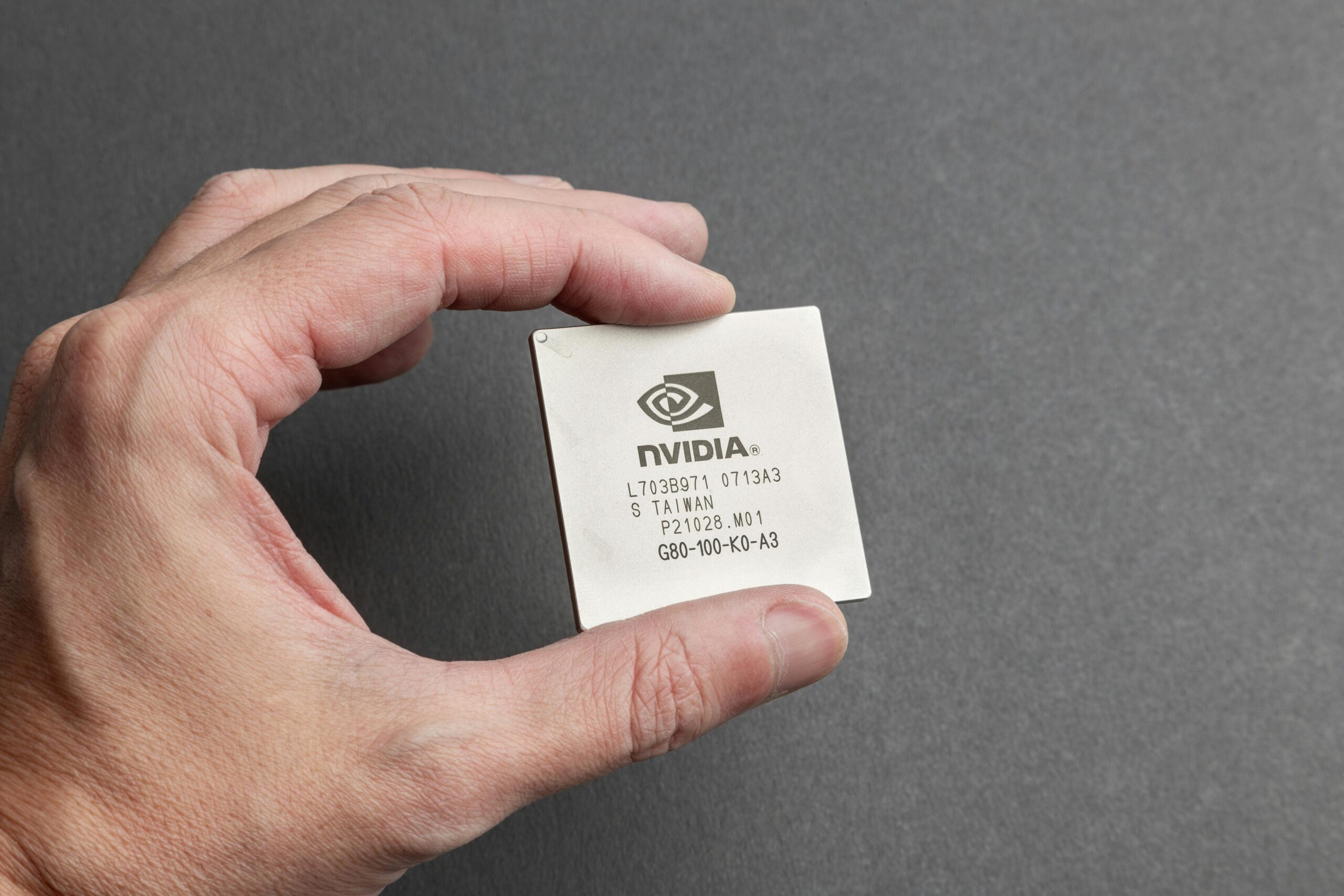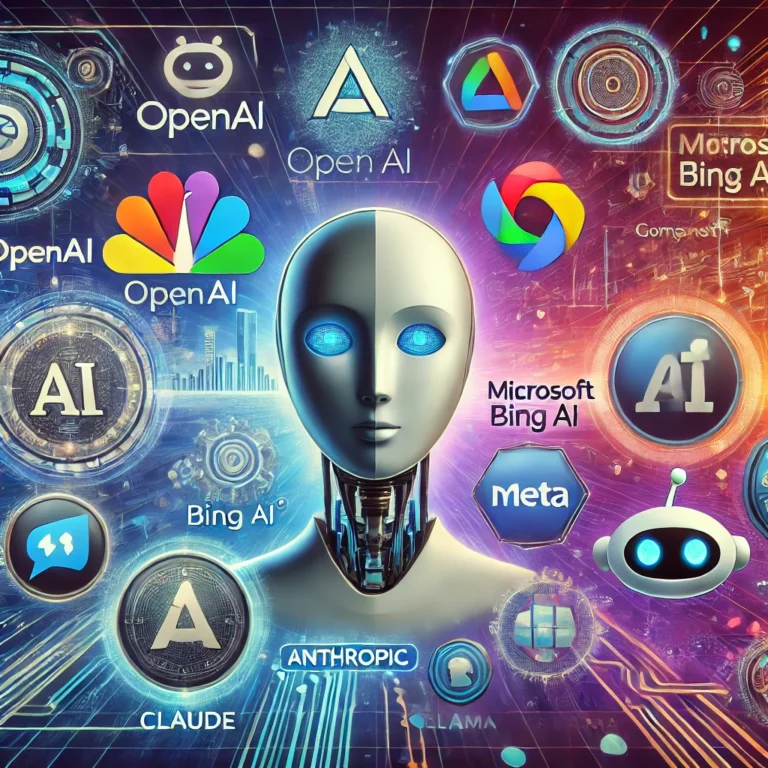Nvidia: From Gaming to Global Technology Powerhouse
Have you ever wondered how Nvidia, a company that initially focused on gaming, has transformed into a tech giant that now influences fields like artificial intelligence, the automotive industry, and cloud computing? This journey, which began with a focus on enhancing the gaming experience, has expanded to shape the future of various industries through groundbreaking innovation and technology.
Humble Beginnings: A Vision for Change
Founded in 1993 by Chris Malachowsky, Curtis Priem, and Jensen Huang, Nvidia’s origin story is rooted in a vision to revolutionize the world of technology. At its inception, the company focused on creating Graphics Processing Units (GPUs) that would change the way people interacted with digital environments. The founders pooled their passion and intellect with one bold goal in mind: making high-performance graphics a central feature of everyday computing.
However, this ambition was not without its challenges. In its early days, Nvidia faced stiff competition, financial constraints, and the daunting task of pioneering a new, untested market. Yet the company was undeterred. Nvidia saw the potential for a future where graphics processing was more efficient, faster, and able to transform not only gaming but other areas of computing.
The Breakthrough: GeForce 256
The real turning point for Nvidia came in 1999 with the introduction of the GeForce 256, the world’s first GPU. Before this innovation, most computing tasks were handled by the Central Processing Unit (CPU), which made performance in graphically intense applications sluggish. The GeForce 256 revolutionized this model by introducing a specialized chip dedicated solely to processing graphics.
This innovation was a game-changer, and Nvidia coined the term GPU to describe this new category of hardware. By offloading graphics tasks from the CPU to the GPU, Nvidia allowed for smoother, faster, and more detailed visual experiences. This was a significant leap forward, especially in gaming, where players could now enjoy vastly improved graphics and more immersive gameplay.
The GeForce 256 was not just a success in the gaming world; its influence stretched far beyond. This technology paved the way for advancements in areas such as scientific research and artificial intelligence by enabling more complex calculations and simulations. It was a defining moment for Nvidia, cementing its place as a leader in the tech industry.
Expansion Beyond Gaming
After the success of the GeForce 256, Nvidia didn’t stop innovating. The company continued to push the boundaries of what GPUs could do, moving beyond gaming to impact various industries. Nvidia’s strategic expansion into sectors such as the automotive industry, artificial intelligence (AI), and cloud computing is a testament to its foresight and ambition.
- Automotive Industry: In 2015, Nvidia partnered with Tesla, providing the GPUs for the Autopilot system used in self-driving cars. This collaboration showcased Nvidia’s ability to adapt its technology for the automotive world, a field far removed from its gaming origins.
- Artificial Intelligence: Nvidia recognized the potential of AI early on and made substantial investments in this field. Its GPUs became the go-to hardware for AI researchers worldwide. In 2016, Nvidia acquired the AI startup Deep Learning Team, further solidifying its foothold in this rapidly growing sector. Today, Nvidia’s GPUs power AI applications that range from voice assistants to recommendation algorithms, making everyday digital interactions more intuitive and personalized.
- Cloud Computing: In 2014, Nvidia entered the cloud computing arena through a partnership with IBM. Together, they developed supercomputers powered by Nvidia’s GPUs, allowing for high-performance computing tasks in the cloud. This marked another pivotal moment in Nvidia’s journey, propelling it to the forefront of the cloud computing industry.
Shaping the Future: Nvidia Today and Tomorrow
Fast forward to 2024, and Nvidia is a giant in the tech industry, influencing far more than just gaming. Its GPUs are now integral to fields as varied as autonomous vehicles, scientific research, and entertainment. Nvidia’s technology plays a crucial role in powering some of the most advanced AI and deep learning systems globally, helping to shape the future of robotics, healthcare, and transportation.
The company’s innovation in deep learning has been particularly impressive. In the last year alone, Nvidia has introduced new GPUs that deliver unprecedented performance, pushing the limits of what is possible in AI-driven applications. These advances are driving forward areas like medical research, where AI-powered systems can analyze vast datasets faster than ever before, and climate change modeling, where GPUs help scientists simulate and predict environmental changes.
Looking ahead, Nvidia’s ambitions remain as bold as ever. The company is focused on next-generation GPUs that promise even greater efficiency and performance. Its goal is to continue leading the way in AI, deep learning, and advanced graphics while exploring new applications for its technology in fields like quantum computing and energy efficiency.
Conclusion: A Tech Titan’s Relentless Pursuit of Innovation
Nvidia’s journey is a masterclass in innovation, vision, and resilience. What began as a small company focused on enhancing gaming experiences has evolved into a technology powerhouse with a global impact. From its breakthrough with the GeForce 256 to its current leadership in AI and cloud computing, Nvidia has consistently pushed the boundaries of what technology can achieve.
The company’s relentless pursuit of innovation and excellence has ensured that it remains at the forefront of technological advancement, shaping the future of industries across the board. As Nvidia continues to evolve, one thing is clear: its journey is far from over. In fact, it’s only just beginning.






